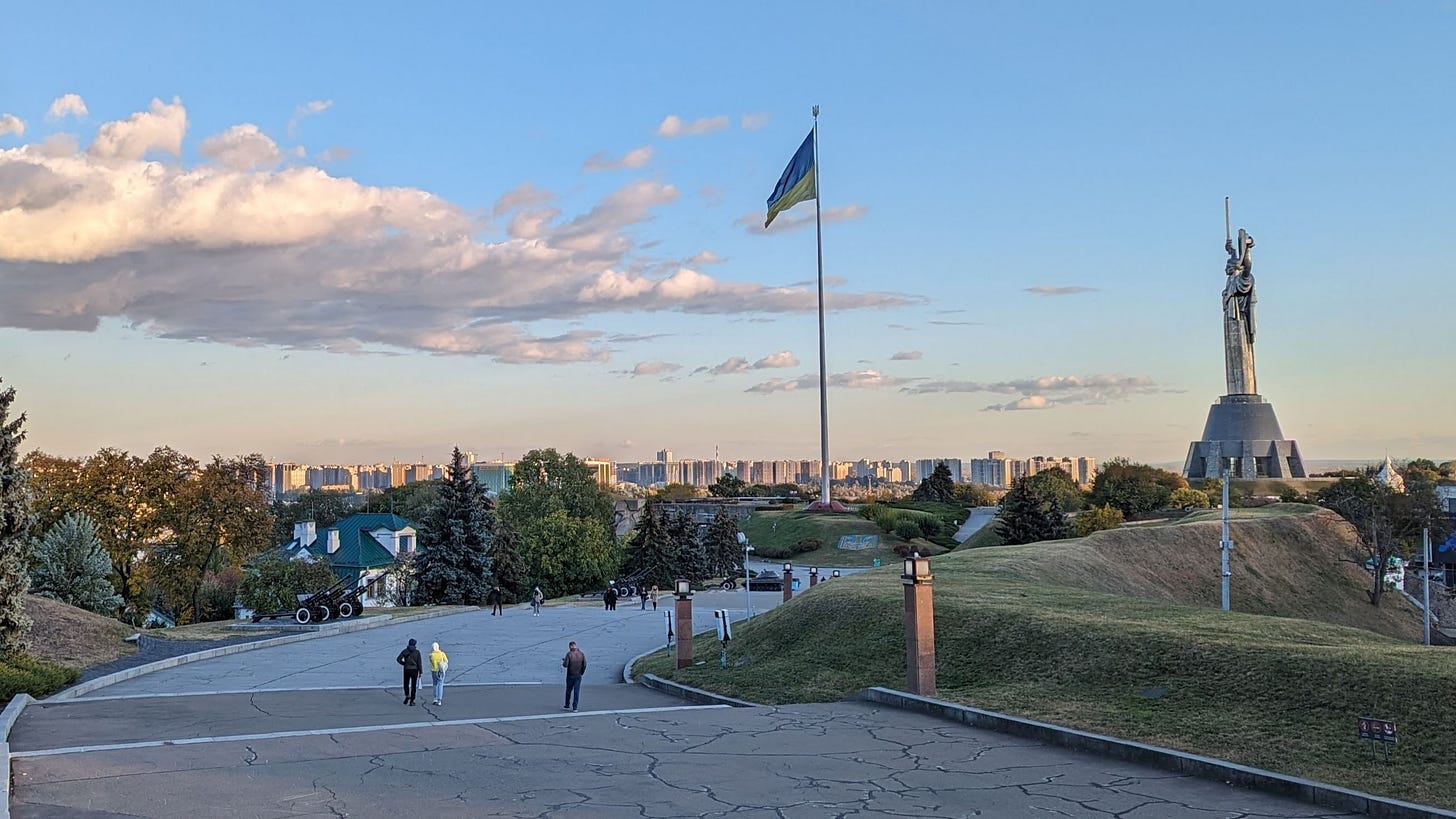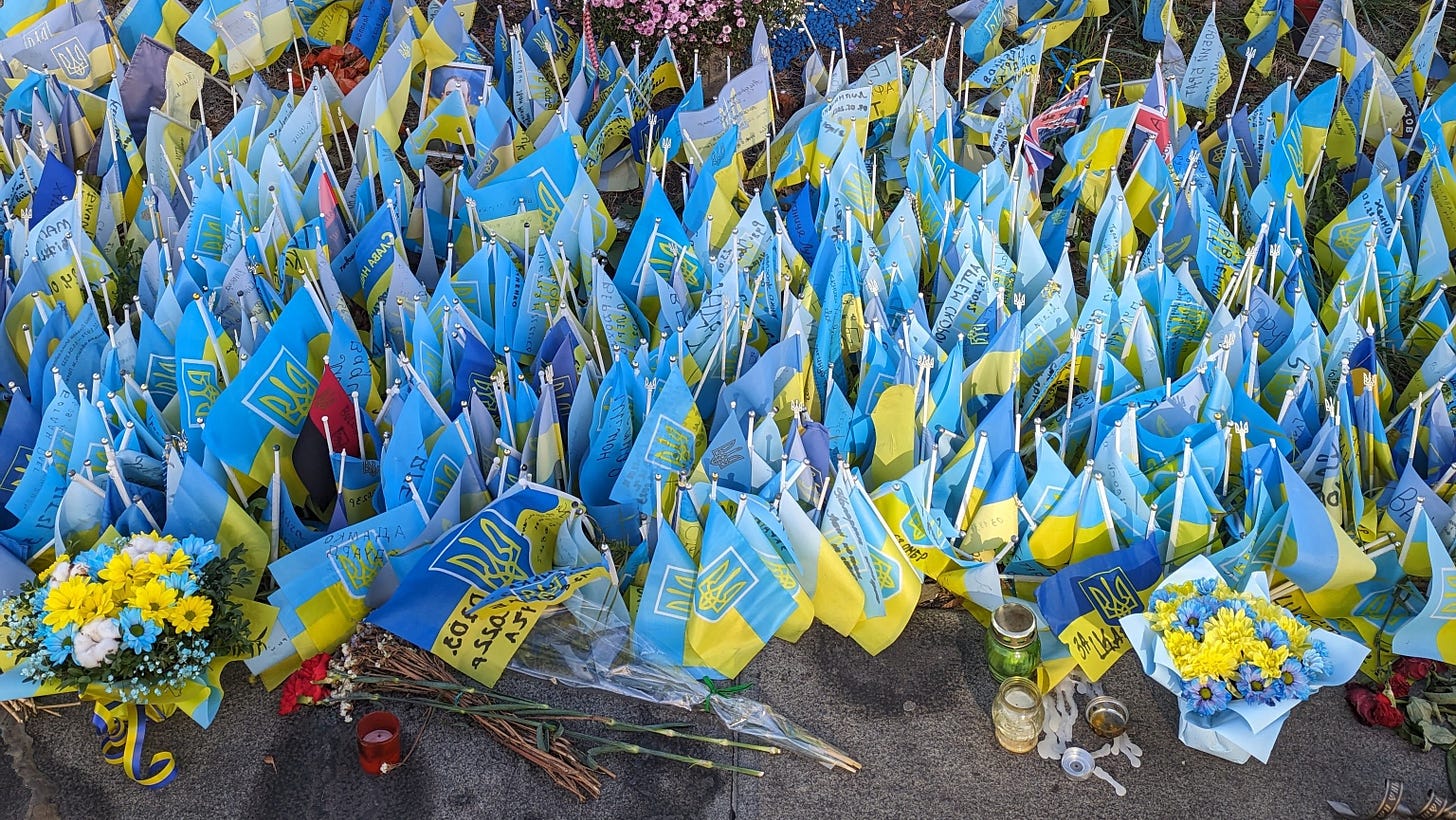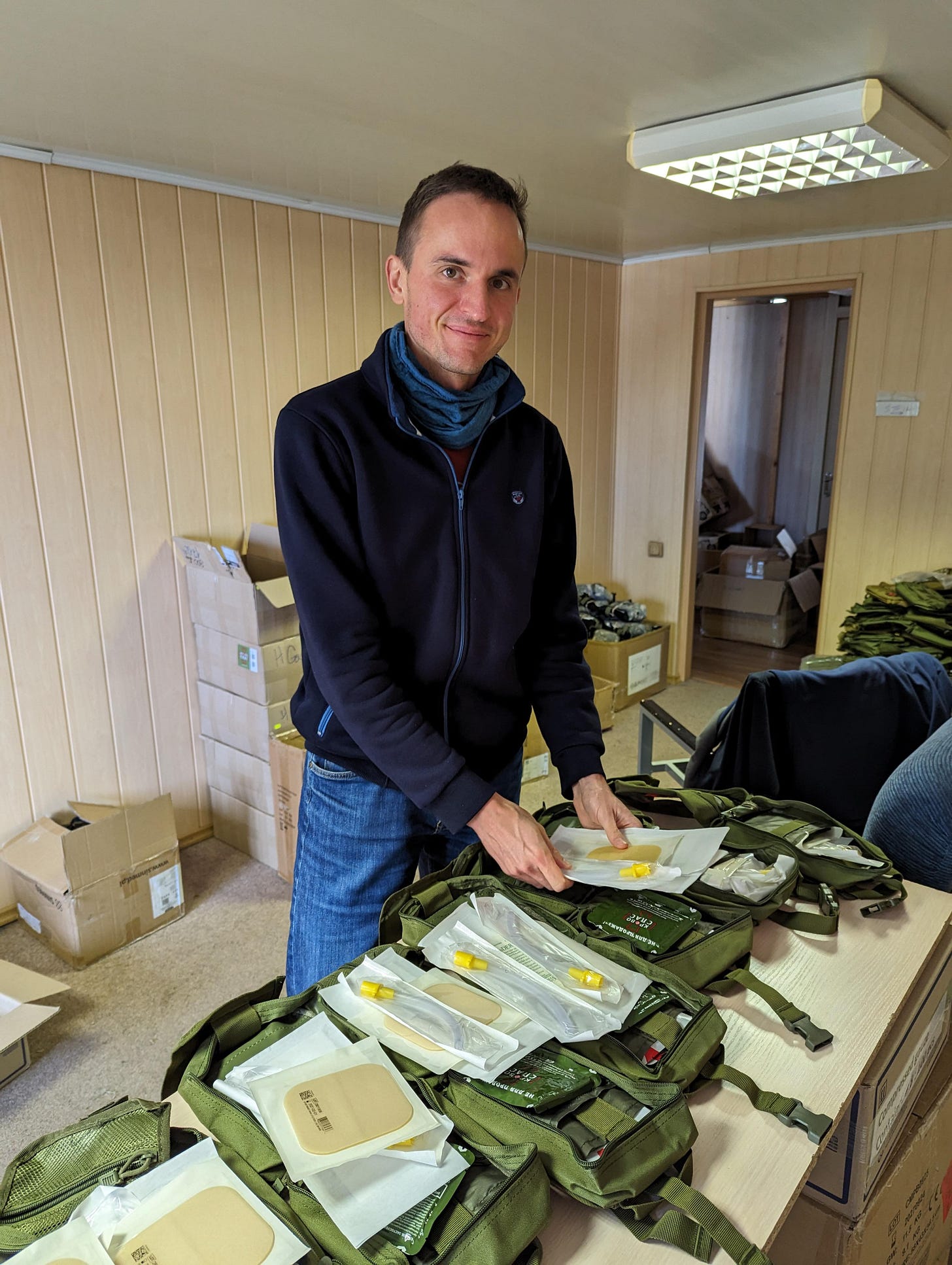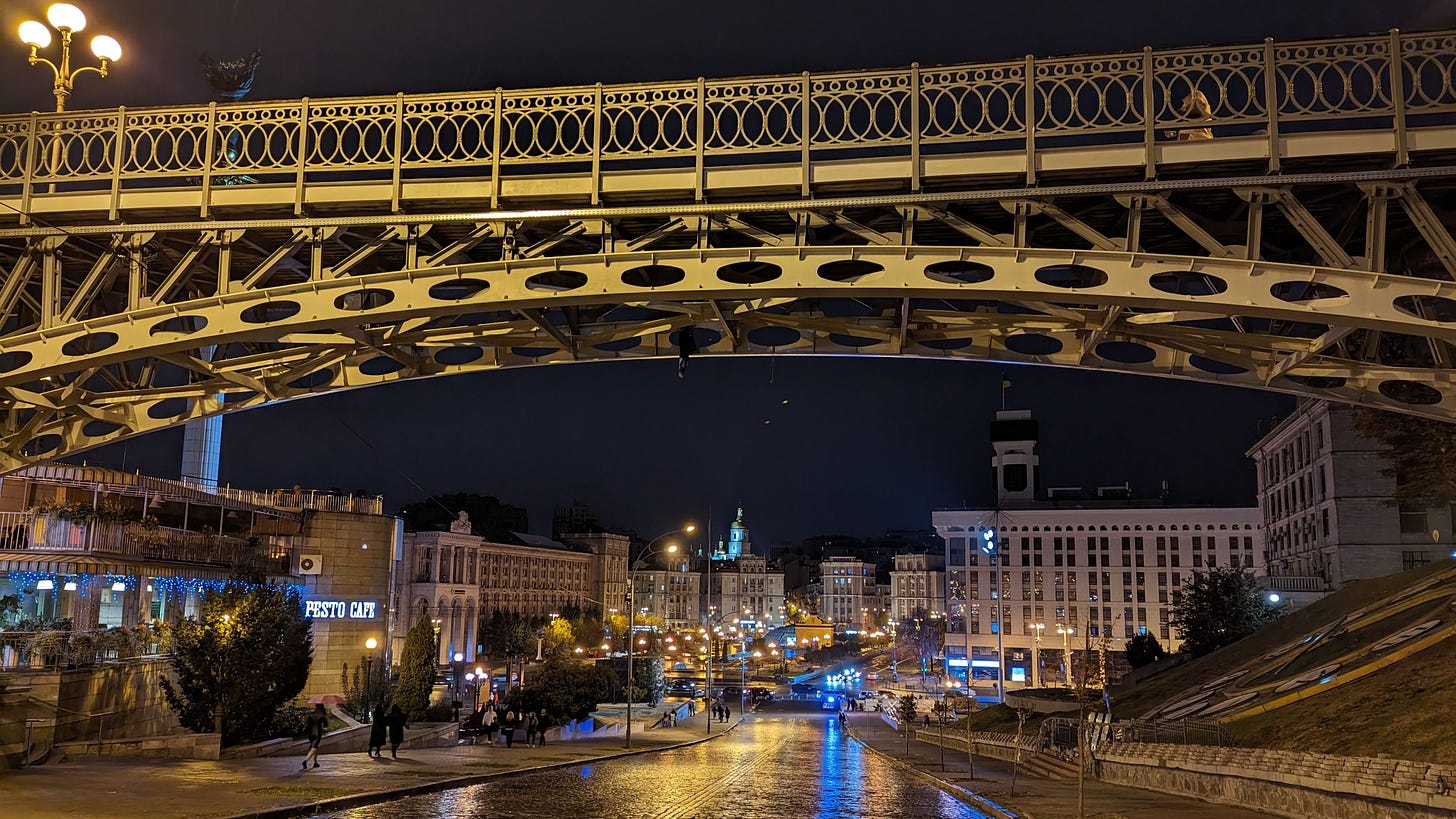Dispatch from Kyiv
🇺🇦 Travel to Ukraine, life in Kyiv, joining an NGO for a day of first-aid kit assembly
Kyiv remains in Ukrainian hands.
American war correspondent Tim Mak has been opening all his reports from Ukraine with these words, ever since the beginning of Russia’s invasion in February 2022.
I just wrapped up a week in Kyiv, where I visited a friend and joined a small NGO for a day of assembling first-aid kits.
Travel to Ukraine
A few practical notes:
the civilian airspace remains closed, the only way to enter and leave the country is through land border crossings. I entered Ukraine by bus and left by train.
travel to Ukraine remains “not recommended” by any and all relevant institutions. As noted by GPT-4: make sure you understand the risks involved in traveling to or near Ukraine.
that said, travel to Ukraine remains possible, subject to regular entry rules. Travelers from most European countries don’t need a visa.
When I showed up at the border crossing with the only non-Ukrainian passport on my bus, no-one asked me any questions. The border officer stamped my passport and that was it. On the way out, they asked if I also had an Ukrainian passport. (Ukrainian men of fighting age are not allowed to leave the country.)
Life in Kyiv
I spent 5 days in the Ukrainian capital.
The Kyiv I discovered is a highly-functioning, global city. Cafés and streets are bustling with life. Metro is efficient. Cards are accepted everywhere. Most restaurants have English menus and English-speaking staff.
At the same time, the spectre of the ongoing war is always nearby.
Photos, flags and posters commemorate the victims of the Russian aggression and the bravery of the country defenders. At the train station, soldiers depart to and come back from their units. Air raid alerts are frequent, but don't elicit much reaction. People use the official app and a few unofficial Signal / Telegram channels to follow along the alerts.
The most prominent sign of the war is the curfew. In Kyiv it's forbidden to be in the streets from midnight to 5AM. This is strictly observed, the businesses close at 10PM to give everyone time to get back home. Apparently some bars adapted by closing the doors before curfew and keeping the party inside going until 5AM 🥳.
Travelling Colonels
While in Kyiv, I spent some time with a group of American volunteers sourcing and assembling IFAK first-aid kits.
They run an impressive operation: on one hand working with donors (financial and in-kind) to raise funding, buying the supplies from companies in multiple countries (there are ~25 items that go into each first-aid kit), assembling them on the spot in Kyiv and then finally working with runners that bring the finished kits to where they're needed the most. A set of Polish-made tourniquets I brought was on the way to the frontlines within 24h.
Since last December, they already made and distributed almost 5000 kits. Not bad for 2 guys in their retirement 💫! If you want to support them and fund even more kits, here's the fundraiser. The split of funds is 100% for first-aid kits, 0% for admin or personal expenses. From what I gathered, these continue to be much needed, all kits are rapidly distributed.
Postcard from Kyiv
Stay warm,
– Przemek







Wow!